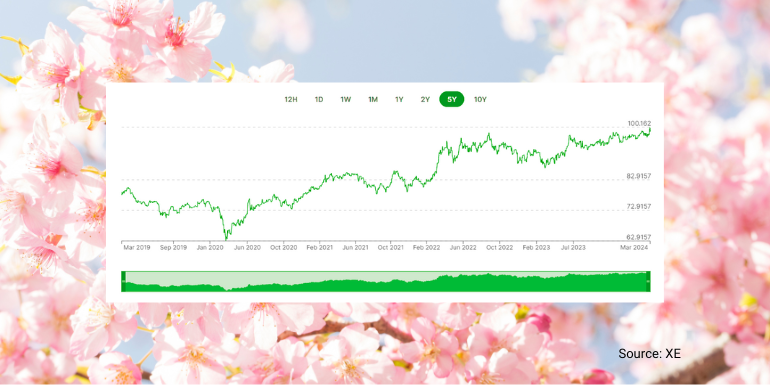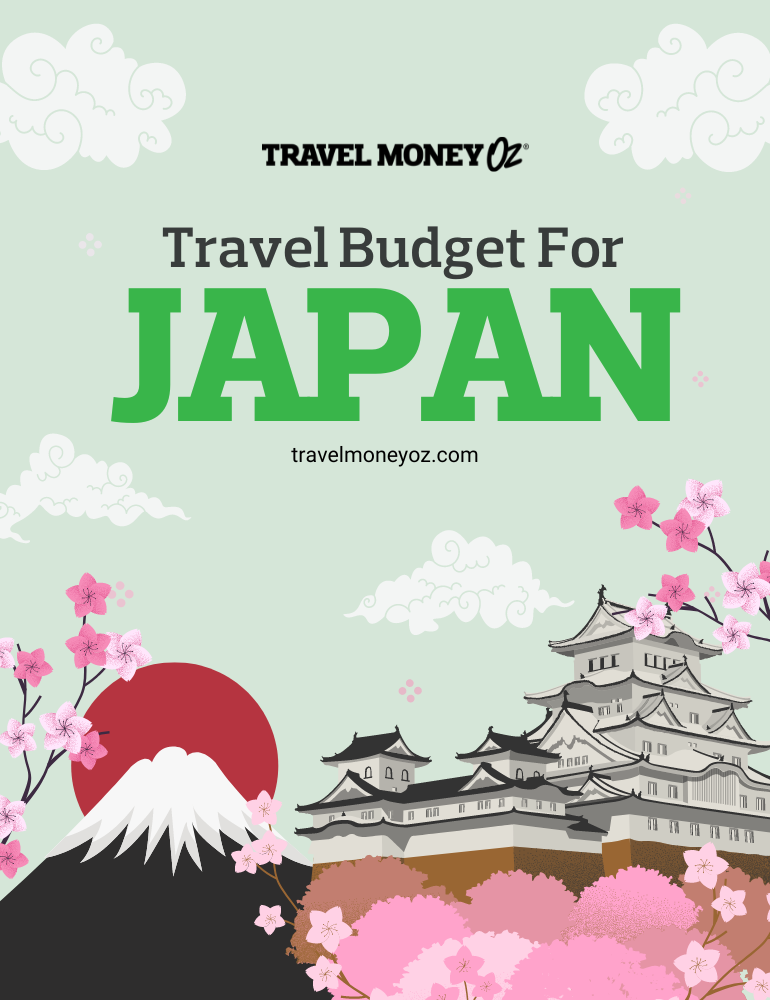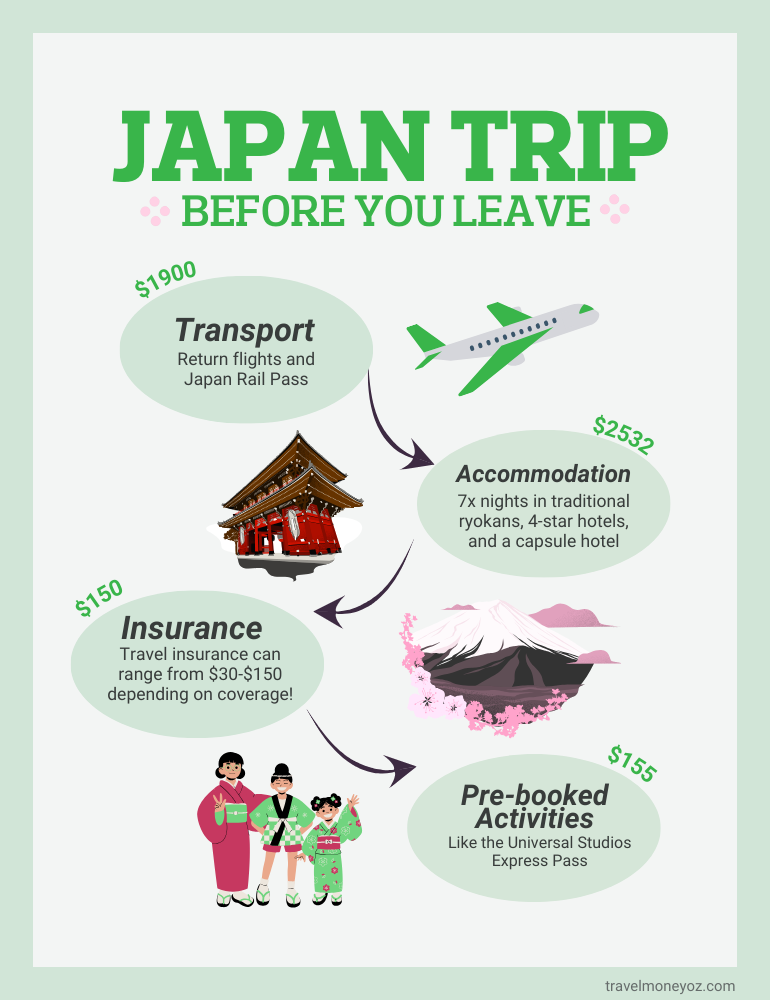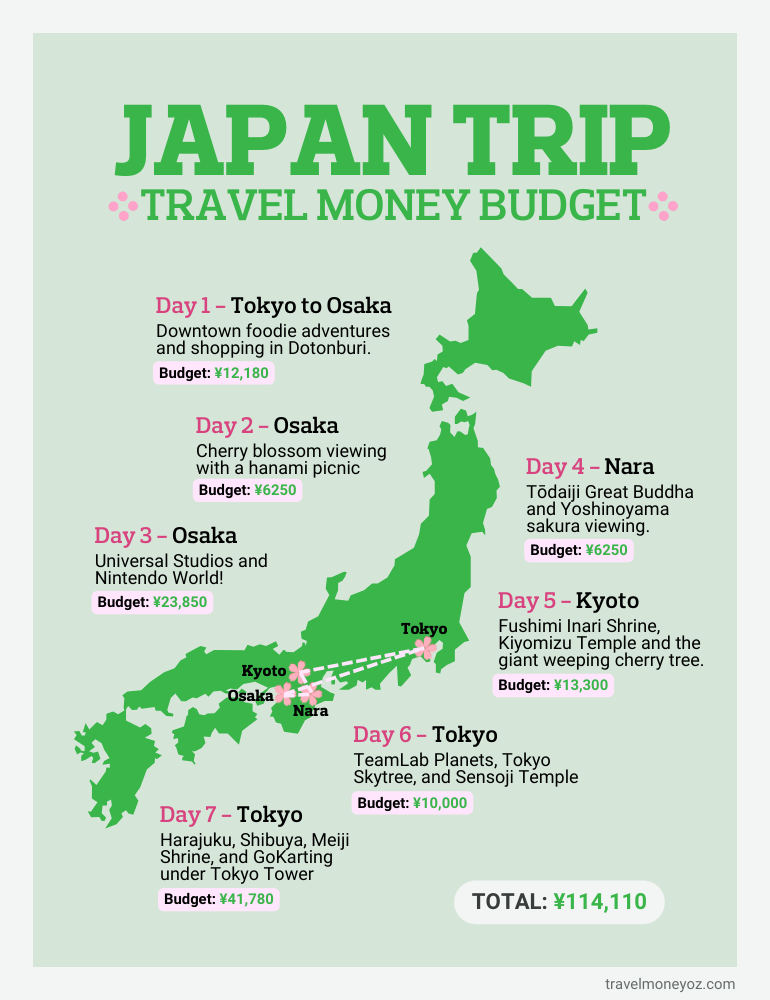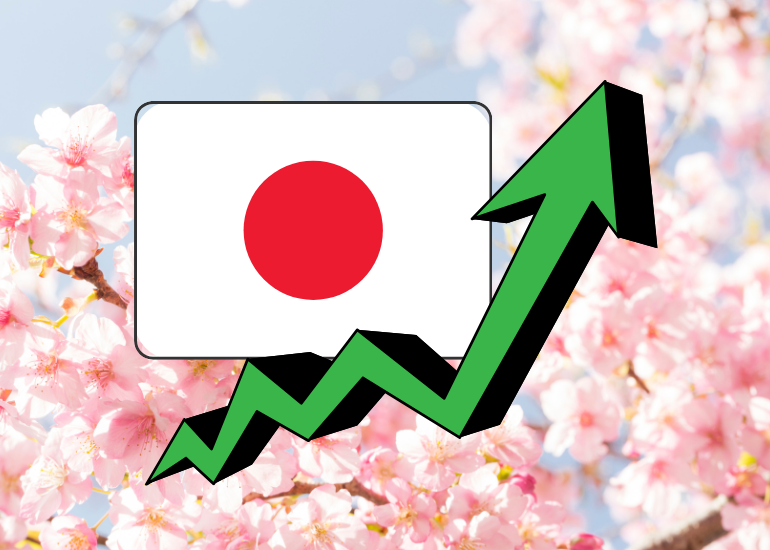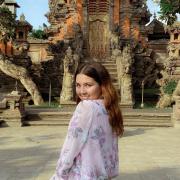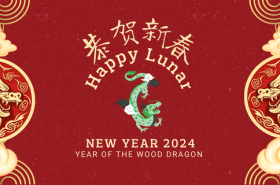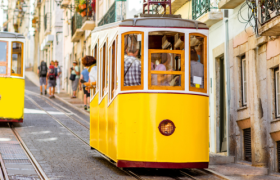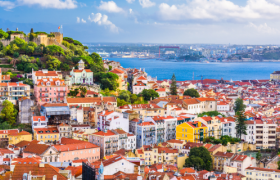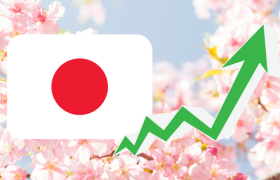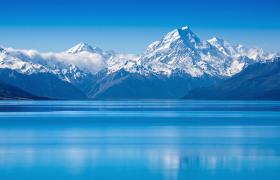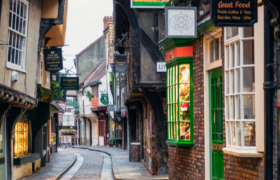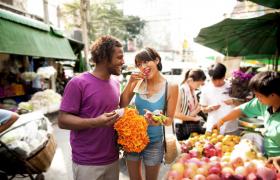Quick Contact

22nd March 2024
Being exchange-rate savvy could mean the difference between spending $1156, $1312, or $1811 on the same holiday. Now is the best time to buy Yen!
Right now, it is the best time to by Yen as the Australian Dollar (AUD) is the strongest it’s been against the Japanese Yen (JPY) in almost ten years!
Now, we know the Aussie Dollar hasn’t been at its hottest for a while (let’s be real, the AUD has been underperforming like me in my fifth-grade synchronised swimming competition), but luckily for travellers heading on their dream Japan cherry blossom trip, the Australian Dollar to Yen rate is incredibly favourable right now.
As in, 1AUD = 98.7JPY on the market today.
*Remember, market rate isn't retail rate - read our explainer if you need a quick refresher!
To put this into perspective, this time last year 1AUD was around 87JPY. And five years ago in March 2020, it was only a measly 63ish JPY to the AUD dollar.
Or, if you’re like me and prefer some real-life examples, here’s what this actually means for you as a traveller!
Japan Travel Scenario
Here’s a dreamy, authentic, petal-pink Japan itinerary for a week-long trip to Japan’s Golden Triangle (Tokyo, Kyoto, and Osaka) during sakura season. It’s a full Japan cherry blossom trip that captures all the highlights of Japan (including all the delicious local specialty dishes!) complete with a travel budget - intended for one person solo travelling the Land of the Rising Sun. Of course, you can always extrapolate this Japan itinerary to make it a fun family holiday, or use it as a base for a romantic Japanese couple’s getaway as well!
PS – if you want to learn more about Japan’s cherry blossom viewing rituals, makes sure to read our Japan cherry blossom guide! And we also have a more general Japan travel budget breakdown for budget, mid-range, and luxury travellers as well.
Japan itinerary for a solo traveller with a mid-range travel budget.
Pre-Departure Budget
Travel costs booked before your Japan cherry blossom trip.
Accommodation:
| 1x capsule hotel in Tokyo ($50AUD/night) | $50 AUD |
| 2x nights 4-star hotel in Osaka ($150-250AUD/night) | $400 AUD |
| 1x night Ryokan (Japanese Inn) or Shukubo (temple stay) in Nara ($100-400AUD/night) | $500 AUD |
| 1x night Ryokan in Kyoto ($100-$350AUD/night) | $450 AUD |
| 2x nights 4-star hotel in Tokyo ($200-300AUD/night) | $500 AUD |
| TOTAL | $1900AUD |
Transportation
| Return flights to Japan ($730-$2000AUD) | $1800 AUD |
| Japan Rail Pass 7 days (50,000JPY to 70,000JPY) | ¥70,000 JPY (approx. $732AUD) |
| TOTAL | $2532 AUD |
Insurance
| Travel insurance for Japan can range from $30-$150AUD. | $150 AUD |
| TOTAL | $150 AUD |
Pre-booked Activities
| Universal Studios Express Pass (ranges from 7800JPY to 14700JPY) | ¥14700 (approx. $155AUD) |
| TOTAL | $155 AUD |
Total Pre-Departure Expenses
| TOTAL (remember, this is example only!) | $4737 AUD |
Japan Holiday Spending Money
Travel costs and holiday spending money during your Japan trip (AKA your travel money)
| Day | Destination | Activity |
Food |
Total Cost |
|
Day 1 |
Tokyo |
Travel to Osaka, check in, get settled, then explore downtown Osaka (and eat EVERYTHING) Set aside a budget for shopping! Example, ¥10,000 |
Breakfast: Snacks: Lunch:
|
¥12,180 Japanese Yen |
| Day 2 | Osaka | Hanami at Osaka Castle! This is one of the most iconic places in Japan for cherry blossom viewing. Castle Admission: ¥600 |
Breakfast: Sakura pan (sweet cherry blossom bread) from the konbini (¥350) Snacks: Hanami Bento - buy this at a "Depachika" department store basement level (¥2500)
|
¥6250 Japanese Yen |
| Day 3 | Osaka | Universal Studios and Nintendo World!
If you're anything like me, you'll probably want to budget around ¥10,000-¥20,000- for souvenirs! |
Breakfast: Bread from the konbini (¥350) Snacks: Special lunch at Kinopio's Café or Yoshi’s Snack Island (¥2500+ because there are so many cool foods to try!) Dinner: All you can eat sushi (¥1000) |
¥23,850 Japanese Yen |
| Day 4 | Nara | Tōdaiji Temple to see the Great Buddha of Nara (UNESCO World Heritage Site) - ¥300 This is also where you’ll see the famous bowing deer! Mt Yoshino, or Yoshinoyama, is one of the most beautiful places in all of Japan for cherry blossom viewing with over 30,000 sakura trees turning the mountain pink. You'll need ¥800 for the ropeway.*Plus more for transport costs in the area etc. not included with JR Pass. |
Breakfast: Chagayu – traditional Nara porridge made with rice and green tea - (¥2500) Snacks: Kakinoha-sushi – Nara style sushi wrapped in persimmon leaves. (¥1000+) Dinner: Miwa Somen – thin noodle dish famous in Nara (¥1300) |
¥6750 Japanese Yen |
| Day 5 | Kyoto | Fushimi Inari Shrine (famous shrine with hundreds of red tori gates) – free entry, take coins for prayer! Kiyomizu Dera Temple (another famous temple with a wooden stage overlooking views) - ¥400 yen entry + coins for prayer. See the weeping cherry blossom in Maruyama Park (especially beautiful lit up at night!).Kinkakuji (Golden Pavillion) ¥500 Tea ceremony near Kinkakuji Temple (¥2000+)*Note: due to “out of control behaviour” and insensitive tourists who have harassed Geisha and Japanese citizens, Japan has introduced laws barring tourists from the Gion area. |
Breakfast: Whatever you like from the konbini (¥350) Snacks: Lunch: Kaiseki-Ryori – traditional Japanese multi-course seafood. Expensive, but well worth it! (¥5000-¥30,000) Or, for the vegetarians, Shojin-Ryori is traditional Japanese Buddhist temple cuisine, absolutely delicious! (¥5000-¥10,000) Another more budget-friendly option is Obanzai – traditional home cooking of Kyoto(¥1500) |
¥13,300 Japanese Yen |
| Day 6 | Tokyo | TeamLab Planets Tokyo (¥3800-¥4200) Tokyo Skytree (¥2,700) Sensoji Temple and Asakusa (free but lots of snacks to buy!) |
Breakfast: A light bite from the konbini (¥300) Snacks: Japanese Curry (¥600) Dinner: |
¥10,000 Japanese Yen |
| Day 7 | Tokyo | Shopping and café-hopping in Harajuku and Shibuya (example: ¥20,000)
Channel your inner Super Mario by go-karting on Tokyo Rainbow Bridge (¥16,500-¥18,500) |
Breakfast: Onigiri from the konbini (¥130+) Snacks: Ramen (¥600) Dinner: |
¥41,780 Japanese Yen |
Total travel costs and holiday spending budget
| TOTAL (remember, this is example only!) | ¥114,110 |
What this means...
So taking this dream Japan cherry blossom itinerary, to have ¥114,110 Japanese Yen of holiday spending money, you’d need to exchange about $1156 Australian Dollars.
Last year, it would have cost you $1312ish Aussie dollars, and in 2020 it would have cost you around $1811ish dollars!
That’s a difference of $156 compared to last year, or $655 compared to five years ago.
And I don’t know about you, but I’d rather an extra few hundred dollars in my pocket, please - that could pay for a whole extra day in Japan and more!
Which is exactly why getting a good exchange rate is so important.
In other words, while the Japanese Yen is falling like the cherry blossom petals, it’s a blooming good time to exchange your AUD to JPY.
*NOTE: Please remember these are just suggestions and approximations, and your individual budget will vary, and there are many personal costs and local transport costs you should consider as well! We’ve used market rates for this example to make it consistent across historical data, but remember, not even we can get market rate (it’d be like getting coffee for the price of coffee beans in Colombia!), and retail rates will vary.
DISCLAIMERS:
AUD to JPY rate from today and historical data based on https://www.xe.com and is based on data from March 22, 2024. The rates used in the calculations are based on market rate for consistency across historical data, not retail rates available to the public.
Flight costs based on search from google.com and are indicative costs only, based on prices available on 22 March 2024. ^Accommodation costs are based on an average per night price for budget, moderate or luxury hotels, as indicated in the table.
COST COMPARISON TABLE: All costs are based on estimated approximate costs from major metropolitan cities. “From” costs indicate costs that start from the indicated price and may be higher than shown. Average prices indicate a typical estimated cost you would pay for the indicated item. Prices may vary from time to time, and in different cities and towns within Japan.
This blog is provided for information only and does not take into consideration your objectives, financial situation or needs. You should consider whether the information and suggestions contained in any blog entry are appropriate for you, having regard to your own objectives, financial situation and needs. While we take reasonable care in providing the blog, we give no warranties or representations that it is complete or accurate, or is appropriate for you. We are not liable for any loss caused, whether due to negligence or otherwise, arising from use of, or reliance on, the information and/or suggestions contained in this blog.
